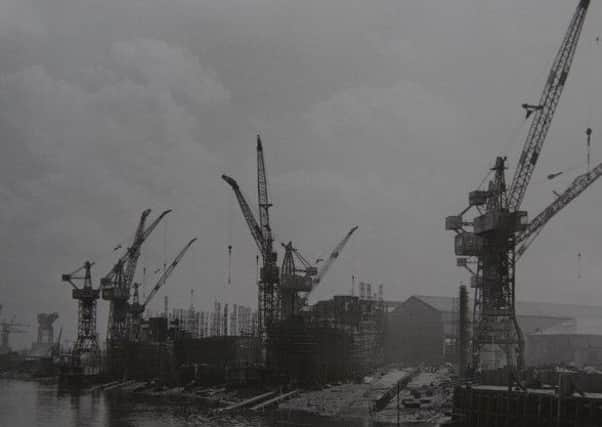The SS Daphne disaster of 1883


Around 200 men were on board, ready to start work on fitting it out as soon as it was properly afloat.
Workers were busy completing the 177ft-long vessel before the shipyard closed for the Glasgow Fair holidays.
Advertisement
Hide AdThe usual practice was to attach anchors by cable to each side of the ship. However, as the SS Daphne moved into the river, the anchors failed to stop the ship’s forward progress.
The starboard anchor moved just seven yards, but the port anchor was dragged at least 60 yards, with the river’s current flipping the ship onto its port side and ultimately sinking it in deep waters.
She had been fitted with engines but no boilers. The boiler hatchway was open and the starboard deck removed to allow the fitting of the boiler, allowing the waters of the Clyde to rush into the ship.
It was reported that around 70 lives were saved, but there is some debate over how many perished.
Some sources reported 124 deaths while others said as many as 195 lost their lives in the sinking.
Among the dead were many young boys, some of whose relatives were watching the launching ceremony from the shore.
Advertisement
Hide AdAfter the disaster, Alexander Crammond, a joiner onboard who had survived the sinking, told The Scotsman: “I noticed she moved very quickly, more quickly than is usually the case.”
Crammond was rescued by a tugboat, standing on the sinking ship up to his waist in water.
Advertisement
Hide AdHesey O’Farrell, a riveter from Govan, believed the current had caused the Daphne to capsize. Along with two other men, he turned the ship’s wheel several times to try and save the ship, eventually jumping off the stern of the ship fearing for his life.
Rescue diver Thomas Fisher described swimming down through the Clyde to the Daphne, reporting that visibility was poor and the water was so thick that he had to work by touch.
He said that the stairway leading to the cabin was ‘blocked with one solid mass of bodies,’ adding: “The men were lying there thick together, the one crowded on top of the other.
“They had rushed from their tasks on board and had ‘jammed each other in a struggle to reach the deck.’”
Among the deceased were three 14-year-olds: snipper boy George McGee; apprentice plumber James Douglas Stephen and rivet boy John Laden, as well as four 15-year-olds: Rivet boys Daniel Dillon and Patrick Farrel; apprentice plumber Alexander McGregor and apprentice joiner John McDonald.
An inquiry was held after the disaster, during which the shipyard owners were held blameless, leading some to claim a cover-up. The cause of the sinking was reported as little initial stability combined with too much loose gear and too many people on board.
Advertisement
Hide AdOne of the outcomes of the tragedy was the limiting of people aboard to those only necessary for mooring a ship after its launch.
The Daphne was later raised, salvaged and refitted and renamed the SS Rose.
Advertisement
Hide AdShe sailed a route between Northern Ireland and Scotland, for the Glasgow and Londonderry Steam Packet Company, later absorbed into the Burns Laird firm - now part of the P&O group.
The SS Rose was reportedly grounded at Farlane Point in Millport in March 1884, before being sold to the Prestwick-based John Bell & Co.
She was later renamed Ianthe, and employed in the East Mediterranean.
She was sold in 1890 under the name ‘Eleni’, and is believed to have been mined and sunk off the coast of the Turkish island of Tenedos in December 1918.
Two memorials exist to what was referred to at the time as the Linthouse Disaster; one in Whiteinch’s Victoria Park, and the other in Elder Park in Govan - both sides of the Clyde representing the loss to those involved.